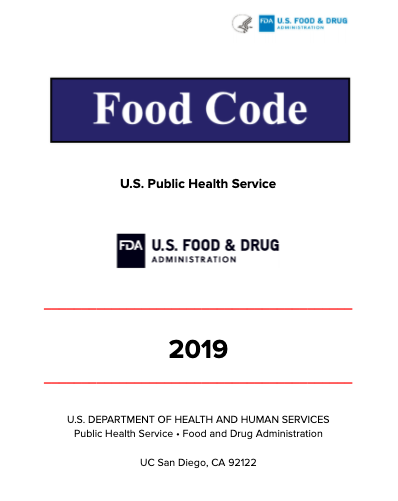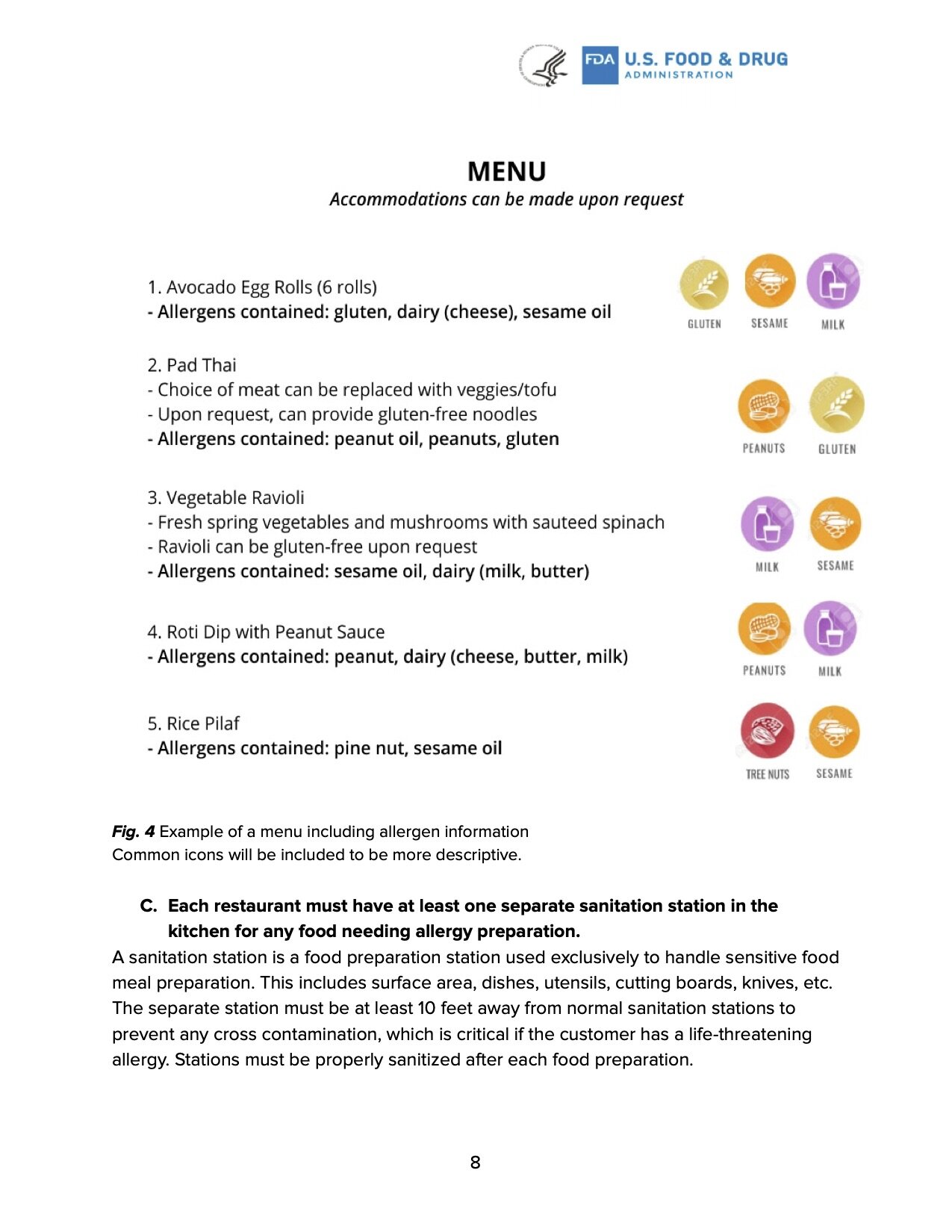Allergy Safety
Role: RESEARCHER
TYPE: group project | AUSTIN L. Stephanie m. kyle s. reginald u. Christie W.
DURATION: 10 weeks
SOFTWARE: Figma AND Final Cut Pro
methods of research: field observation, contextual and semi-structureD interviews
SKILLS: prototyping, user testing, user interviews
overview
Project Allergy Safety researches the problem with restaurants as they accommodate individuals with food allergies. As The Steakholders (team name pun on stakeholders), we interviewed a variety of stakeholders with different levels of allergies as well as the restaurant employees to gain a better understanding in how restaurants accommodate those with allergies. A simple mistake could potentially be life-threatening. Do you have any allergies?
Design Problem
Before finalizing this topic, my team and I were contemplating the issue of just dietary concerns in restaurants. The main reason for this topic stems from our connections to friends and families that have these dietary restrictions, and they have no way of knowing what to order AND what they can order at a restaurant. After establishing this common concern, my team and I also moved forward to discussing our design values and what we hoped to gain from this project.
We hope to gain more insight into how designing with intention can potentially improve a system that is flawed. We strive to make dining more inclusive, accessible, and safe for everyone.
methodology
I created and sent out a quick survey on google forms to receive more insight of the types of dietary restrictions there are, what these stakeholders look for when going out to a restaurant, their process of ordering, and how they communicate with the employees. My team and I each found a stakeholder - specifically someone that we can interview throughout the quarter - to interview for more insight. I specifically interviewed a primary stakeholder: Ravioli, a fellow Triton who doesn’t eat meat, poultry, fish, or roots.
key findings
While the waiters and waitresses try to be as accommodating as possible, all they can really do is give him an allergy menu, which is just a long list of all the ingredients in the food.
Restaurants Ravioli tends to go to are ones that accommodate specifically for his or his friend’s dietary restrictions (mostly vegan places). After hearing this, I believe that interviewing the staff at the restaurants would provide more data and a clearer understanding.
Cross contamination is a huge concern, even more than the ingredients itself. When Ravioli substitutes/modifies an item on the menu, he has to ask the waiters/waitresses to make the item with separate utensils because the staff doesn’t really consider that unless asked
next steps
After gaining a little bit more insight on our primary stakeholders (those with dietary restrictions), we conducted semi-formal interviews with secondary stakeholders - restaurant employees, or those that are friends with individuals with dietary restrictions. I specifically took actions in creating an interview protocol for my team.
Next Steps: Interview Questions
In my field observation and interviews, I observed how servers interacted with customers, how the menu displayed ingredients, the layout of the restaurant, made a note of how busy the store is, and took note of anything else interesting, such as what information was provided via the material on the walls. My team and I also tasked ourselves to take photographs of the menus and the layout of the restaurant.
Semi-Formal Interview Notes
At Woomiok, there were pictures of popular meals advertised on posters around the restaurant.
key findings
Menu doesn’t have enough information; customers are often required to ask the servers for clarity
Servers might not know what kind of cooking oil or seasoning is used
Servers will provide a specialized menu for food allergies
Some employees were knowledgeable, understanding, and helpful when modifying an order to fit a person’s needs
interpretation session
My team and I wanted to understand all the data we’ve gathered. Understanding dietary restrictions in regards to restaurants and stakeholders was still a bit broad and we wanted to narrow our design problem. It was at this point that my team and I wanted to focus on stakeholders with allergies. My team and I had an interpretation session and created an affinity diagram to organize our thoughts. Each member of the team and I described out interviews and key findings, and then while listening to this information, my team and I all wrote down any salient pieces of information onto post-its.
Initial Affinity Diagram
With this initial affinity diagram, I tasked myself with creating a digital format of this through Padlet. As you can see below, I organized these key findings into more general topics with hopes of finding the core issue. From customer trust to restaurant values to server experience, my team and I came to a conclusion that there was a huge disconnect in information flow to the customer in regards to ingredients and contaminants:
1) Communication from menu to the customer and
2) Communication between the server/restaurant staff to the customer
We had some of these questions in mind moving forward:
Why do some restaurants provide a separate menu catering towards food allergies? Is the menu effectively communicating the ingredients? What is the process of communicating with the chef? How do servers know when to do so?
storyboards
We brainstormed potential solutions. With a clear perspective of the project, my team and I tasked ourselves with creating storyboards to find a solution.
Brainstorm
Using Figma, I created a brief persona to capture the identity of the different stakeholders to better understand their values.
Mary Chen is a student and a part time server at a popular restaurant near school. As a server, she interacts closely with the different customers. She is often asked about the ingredients in food and caters to the customers by communicating with the other restaurant staff.
Iteration 1:
From brainstorming those potential solutions, I also moved onto making sketches of what these solutions might look like. In my sketches, I thought of ways to recreate our regulations using low-fidelity materials. These sketches are examples of how I was able to think creatively and also establish individual constraints. These materials will help aid our role-playing prototype during which our stakeholders will also experience. In addition, with the prototypes that might be a little hard to recreate with low-fidelity items, I realized that we could utilize the Wizard of Oz Technique to mimic any advanced technology with human made sounds like *beep*.
iteration 2:
Our prototype forms will take the form of an interactive role-playing session and an actual outline of a proposal. Our role-playing prototype will be a way of visualizing the effects of when our design solution is implemented. We will act as the server, chef, manager, and host. The stakeholder will become our customer. I was in charge of establishing a set schedule of how to run the prototype testing. I did so by creating a table of the stakeholders and roles my team and I would have.
Table of Role Playing Schedule
To maintain the authenticity of the restaurant context, we made sure to run the scenarios from the moment the stakeholders enter the restaurant to the point when they have finished “eating” their food. After having more experience with each of these scenarios, our team was able to feel more comfortable in role playing and our stakeholders also felt more relaxed. This allowed for more genuine interactions between the server and the stakeholder(s).
In the control, the scenario was much like your typical restaurant with a regular menu (lacking descriptions).
In scenario 1, the staff had special training to communicate with the customer, and the restaurant used colored flags (labelled “allergy!”) as well as colored order receipts, and had the control menu.
In scenario 2, the restaurant had an allergy sign on the front door and then a menu with allergen information with it.
Each stakeholder was then required to fill out a survey after each scenario for more insight on how they felt and to also prevent any bias.
Post Prototype Testing Questions
key findings
Communication between the staff and customers is important
Stakeholders could feel the chain of interaction in Scenario 1
Servers should be knowledgable in possible and most common allergens in food
Most stakeholders were comfortable with Scenario 2 because they felt more customer trust
4 of the stakeholders liked the reassurance of the restaurant acknowledging their allergy issue through: menu symbols, allergy sensing technology, and an FDA certified sign
iteration 3:
These key findings further confirm the need for a regulated proposal as our final solution. These are the key features included in the proposal:
Final Solution
Our final design solution takes the form of an FDA Proposal draft that is enforced in restaurants. It contains insights directly from stakeholders outlining the impact the FDA regulations would have on their experiences at restaurants. The proposal includes “requirements” to be followed by all restaurants as well as “highly recommended” items they should include in their restaurants.
supplement
For the final showcase, I also produced and edited a video to further communicate our key findings from user testing.




















